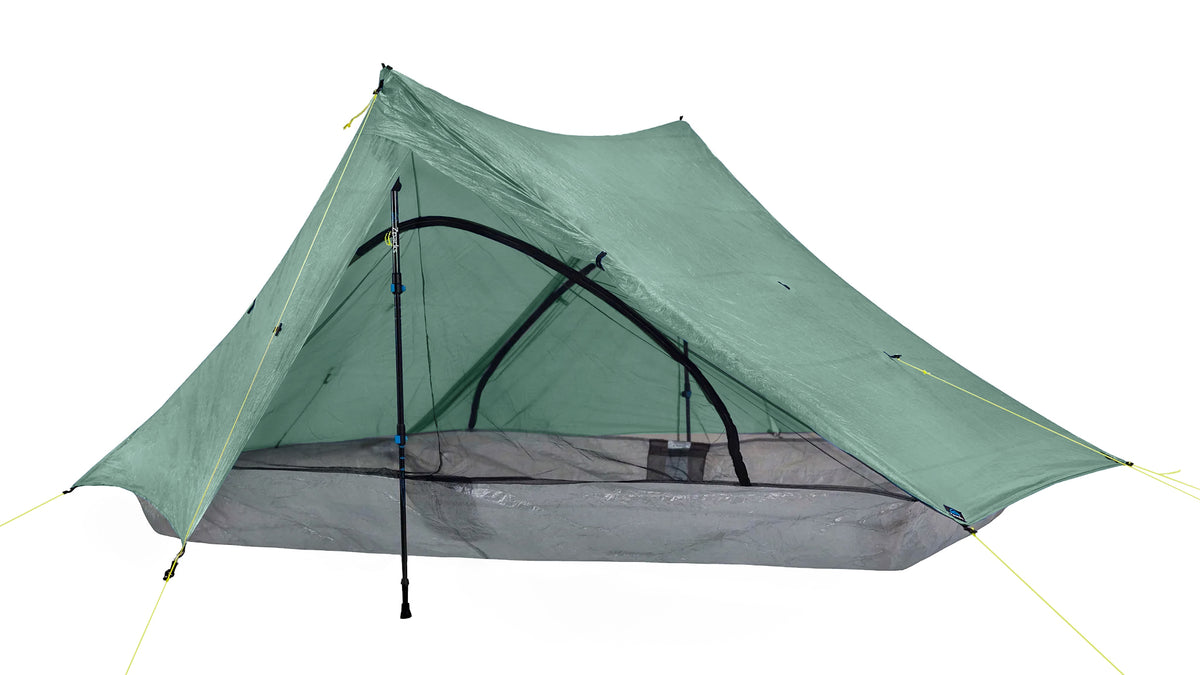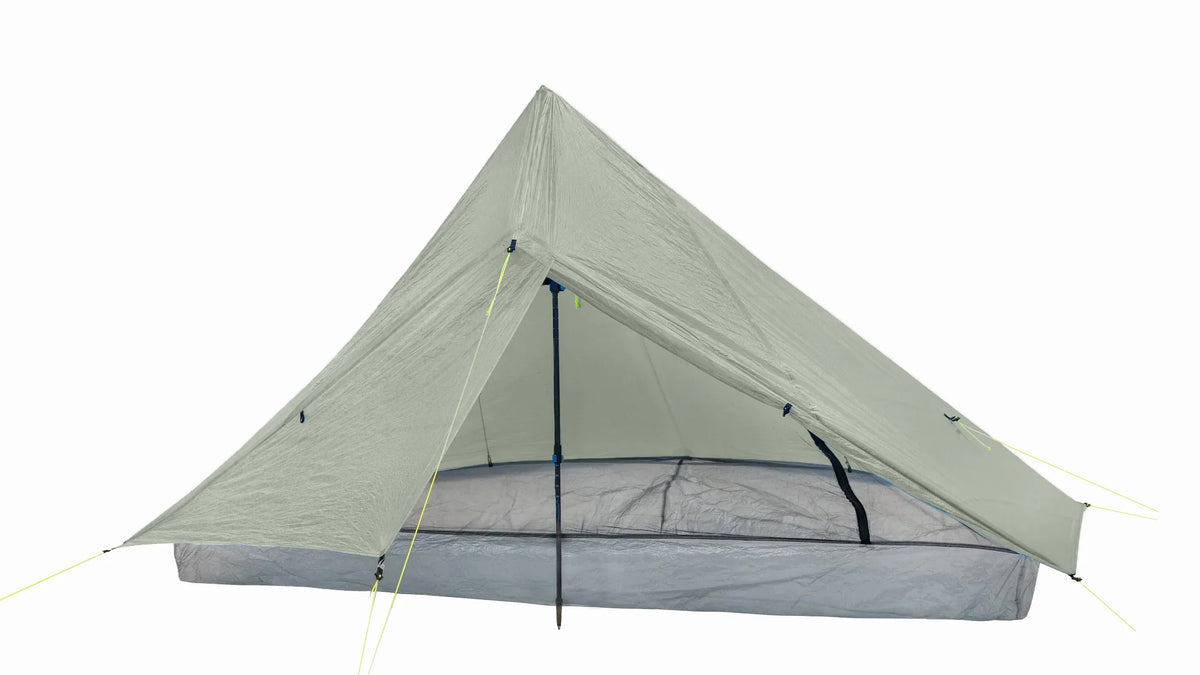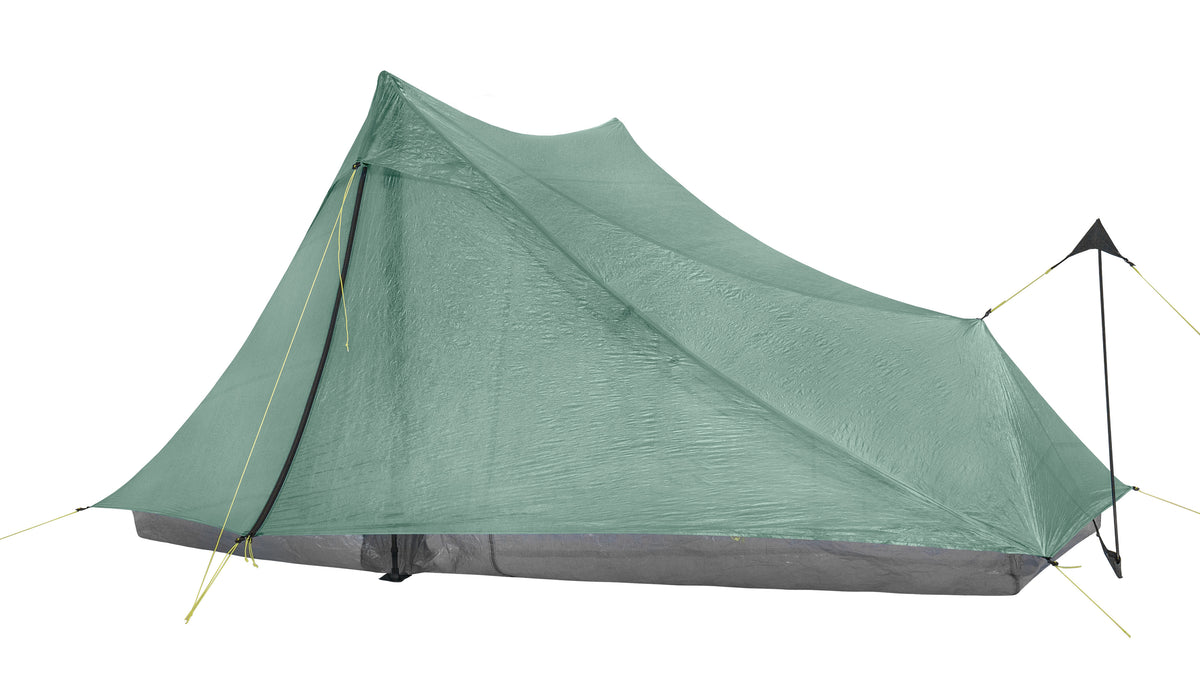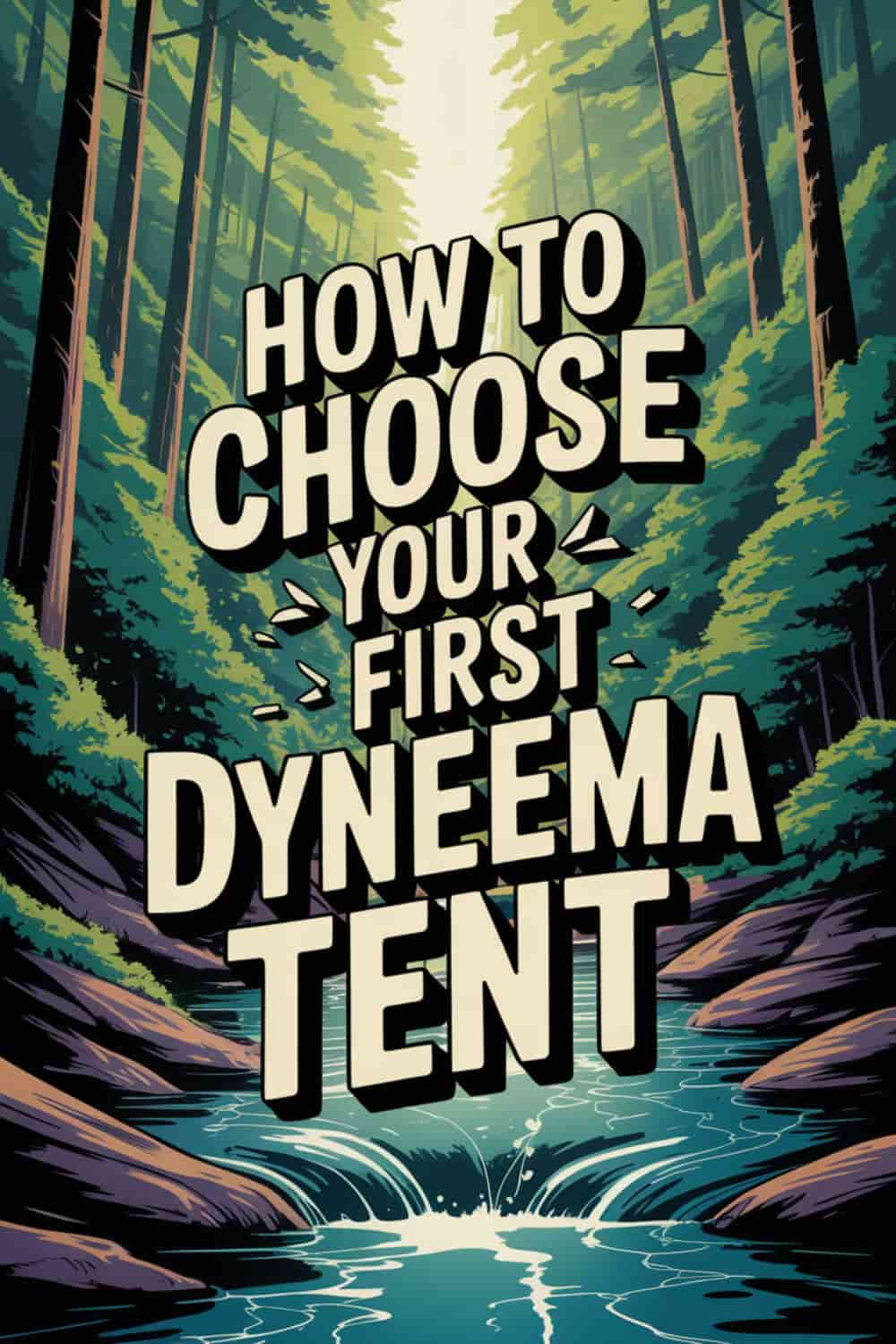Dyneema tents cost $600-900 and weigh 30-60% less than traditional silnylon tents. These ultralight shelters offer excellent 8,000mm waterproof ratings but require careful handling and perfect setup skills. You'll get 20-28 square feet of living space in exchange for significant weight savings.
Key Insight: Dyneema tents are about trading comfort and ease-of-use for weight savings. They're not typically considered beginner-friendly, but they're unmatched for experienced ultralight backpackers.
Understanding Dyneema Construction
Dyneema Composite Fabric (DCF) weighs typically around 0.51 to 0.74 oz per square yard compared to silnylon's 1.1 oz. This creates dramatic weight savings, but the laminated layers that provide waterproofing can delaminate if mishandled.
Advantages:
- Won't sag in wind or rain
- Better tear resistance than similar-weight fabrics
- Stays lighter when wet
- Less condensation buildup
Disadvantages:
- Higher cost per ounce
- Requires careful handling to prevent delamination
- More setup precision needed
- Limited repair options in the field

Essential Setup Requirements
Site selection is critical for Dyneema shelters. Look for flat terrain with natural windbreaks and clear away debris. Avoid sharp rocks and sandy soil that compromises stake holding power.
Setup Fundamentals
| Setup Element | Correct Method | Common Mistakes |
|---|---|---|
| Stake Placement | 45° angle, proper depth | Loose, pulled out |
| Guy Line Tension | Balanced, adjustable | Sagging, stress points |
| Ventilation | Strategic airflow | Condensation problems |
For most Dyneema shelters trekking poles become your structural foundation. Aluminum poles offer better durability than fiberglass options. Practice setup at home before your first trip.
Pro Tip: Most Dyneema tent failures happen during setup, not from weather. Master the basics before hitting the trail.

Weather Performance Limitations
Most Dyneema tents are 3-season shelters suitable for spring through fall. The 8,000mm waterproof rating handles heavy rain, but winter conditions present challenges.
What Works:
- Excellent rain protection in downpours
- Strong wind resistance with proper guyout systems
- Multiple ventilation options reduce condensation
What Doesn't:
- Limited snow load capacity - heavy snow will collapse ultralight designs
- Reduced winter airflow affects ventilation
- Requires 4-season models for true winter camping
True 4-season Dyneema tents exist but cost more and weigh more, featuring fewer mesh panels and steeper roof pitches for snow shedding.
Interior Space Reality
Expect 20-28 square feet of floor space with peak heights around 40 inches. This means you can sit upright but headroom is limited.
Space Compromises:
- Single front doors require crawling entry
- Minimal headroom for tall users
- Vestibules range from tiny (0.65 sq ft) to useful (7 sq ft)
- Gear storage competes with living space
Reality Check: These tents fit with gear space the designated number of people minus one. For long distance hiking your gear, and space becomes cramped quickly.
Dyneema won't sag when wet, so you maintain whatever space you started with. Interior mesh pockets help organize small items.
Budget and Brand Selection
Quality Dyneema tents cost $600-900, not including essential accessories. Hidden costs include stakes, repair kits, and guy lines that can add $50+ to your total.
Recommended Brands
- Zpacks - Industry leader with proven durability
- Durston - Excellent value and customer support
- HMG - One of the originals still producing outstanding gear
- Hybrid designs - Nylon floors reduce costs while maintaining benefits
Budget Considerations:
- Stakes and accessories often sold separately
- Repair kits are essential for DCF maintenance
- Upgraded materials (0.75 oz canopy) cost more but offer better puncture resistance
What to Look For
- Brand transparency about materials and construction
- Detailed warranty policies
- Real customer reviews about durability
- Complete weight specifications including all components
Bottom Line: Budget for the full system, not just the tent price. A $700 tent might need $100 in accessories to function properly.

Making the Decision
Dyneema tents excel for experienced ultralight backpackers who prioritize weight savings over comfort. They're not ideal for beginners due to setup complexity and careful handling requirements.
Choose Dyneema If:
- You're experienced with ultralight gear
- Weight savings justify the cost
- You understand the setup requirements
- You're willing to trade comfort for performance
Consider Alternatives If:
- You're new to backpacking
- You prioritize interior space
- You want easier setup procedures
- Budget is a primary concern










